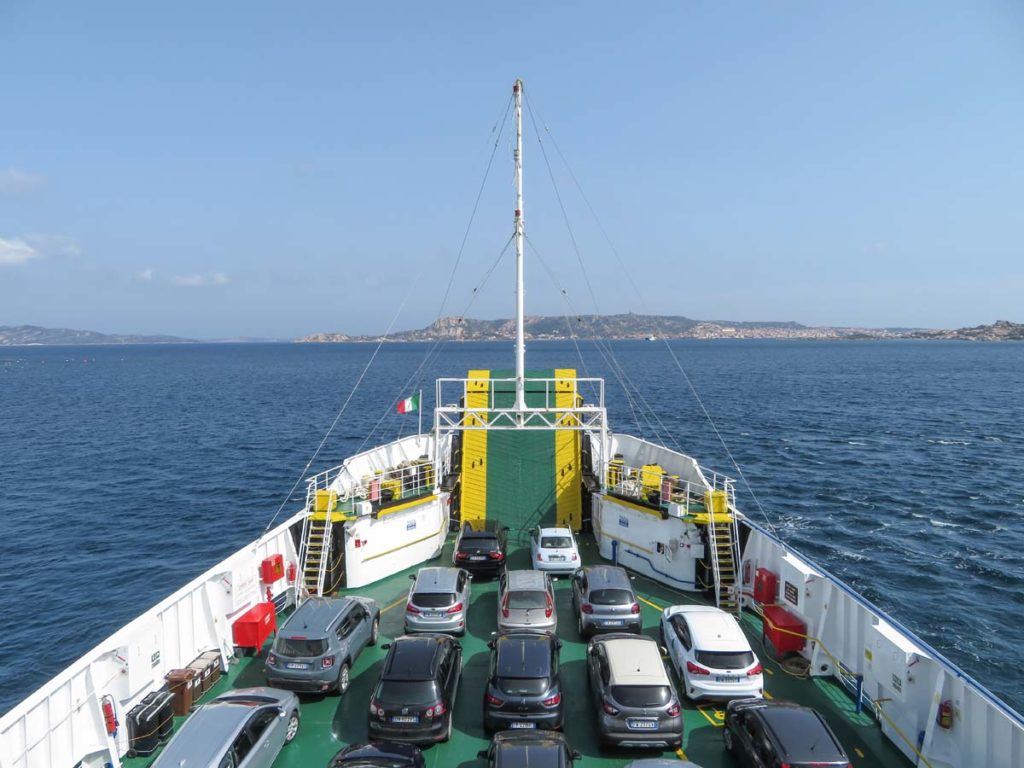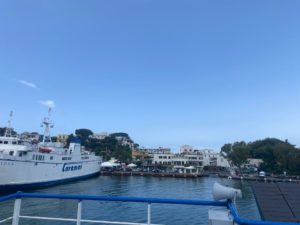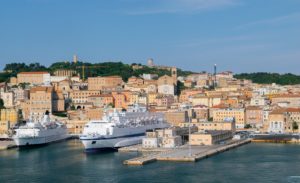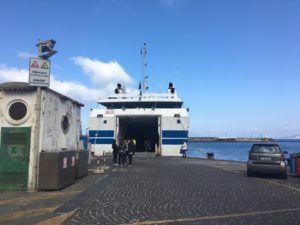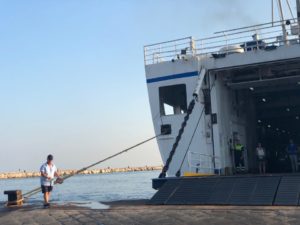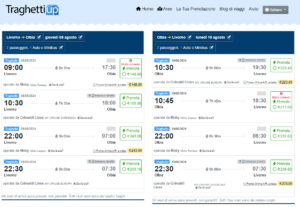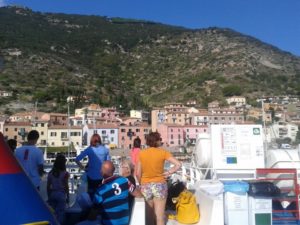Traveling by ferry with a car in tow
By the term car we mean vehicles for transporting people. Regarding the vehicles used for the transport of goods the informations for embarking commercial vehicles on ferries are available at the link already indicated. If only people with their own belongings and luggage travel on the car, the following procedure is to be followed. Even before boarding the vehicle, in the phase after the booking, it is important to verify that all the data on the ticket correspond to the request and that the data below correspond to what is indicated on the car registration document and on the identity document, which they may also have to be shown before boarding. In fact, at the time of booking of the ticket it is necessary to communicate the characteristics (license plate, make, model) and dimensions of the vehicle, which will influence the final price (usually a separation point between tariff categories is the length of 4 meters, beyond which the cost increases; an increase is also foreseen for trailers or caravans), and declare the vehicles LPG/methane on ferries (at the link all the information useful for boarding when the fuel is gas). This last signaling will be repeated, in some cases, to the Command on board and in any case upon boarding.
If you are traveling with a camper, caravan, off-road vehicle or vehicles with a height of more than about 2 meters from the ground, you must report it when you book. Even the width if it is usually greater than one meter and eighty must be reported, although it is often not subject to changes in the rate. The dimensions are to be considered overall, or considering also any protruding parts, such as tow hooks, luggage racks or other; each company establishes different dimensional and overall dimensions limits. An important ban is to carry flammable, explosive, corrosive, dangerous materials, cylinders full of oxygen, compressed air, gas and the like inside the vehicle.
Procedures and advice for embarking and disembarking cars
To embark with a car, it is necessary to arrive, depending on the shipping company and the port, thirty to ninety minutes before departure. It is obligatory to have vehicles that are efficient in every part, especially as regards the braking, rolling and suspension components. The boarding, parking and disembarkation of the vehicle take place under the guidance and responsibility of the passenger driver, in according to the directives of the on-board staff. During these phases any other passengers must not be present in the car. The vehicles will not necessarily be boarded in the chronological order of their arrival at the quay, but according to the provisions of the Captain and the staff (LPG/methane powered ones, for example, have a particular regulation that can affect access). Once parked it is mandatory for the drivers:
- insert a low gear and fully apply the parking brake;
- close the windows and doors;
- turn off the engine, lights and any other electrical equipment;
- in the case of gas supply, close all the shut-off valves;
- remove keys from the dashboard (some companies may require you to leave the car accessible and with the contact key inserted);
- disconnect the alarm and/or the alarm.
You may ask to unload any baggage from the roof. If it is not possible to lock the car obviously you should not leave your belongings there, but this is a tip that always applies especially if you have valuables. During the crossing and the mooring and unmooring operations you cannot go or stay in the car and in the ferry garage. The engine cannot be started before the landing ramp is opened. Upon arrival, the vehicle must be promptly collected. Any damage or other harmful events occurring on board shall be reported before disembarking and in no case the passenger will have the right to abandon the vehicle. In case of a request for compensation for having received a damage, in order for the compensation to be admissible, the condition of the vehicle must be recognized upon arrival, in contradiction with the on-board Command, and recorded.
Prohibition of disembarkation by vehicle on smaller islands
During certain periods of the year, the limitation to the influx and circulation of cars, motorcycles and mopeds on some smaller Italian islands is decreed. These are the prohibitions of disembarking of vehicles for non-residents of certain island municipalities declared as residence or care, in force in the periods of medium and high tourist season, and in some cases in the low season. The same provision, with some exceptions, also provides for the possibility, for categories of people who are not permanently resident on the islands in question, to land vehicles.

